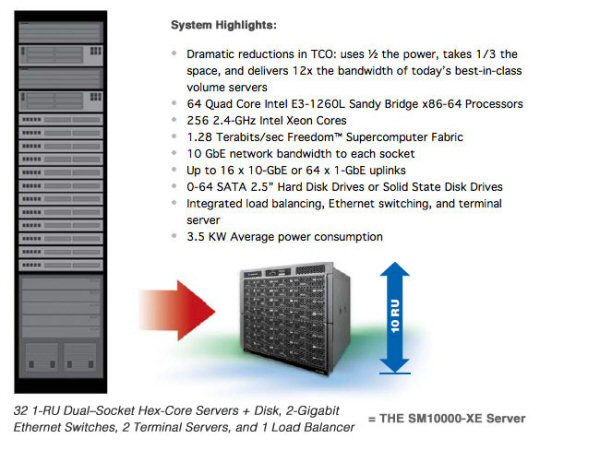The SeaMicro SM100000-XE, which is aimed squarely at the datacentre market, is an upgrade from the SM10000-64HD, which launched last year with 384 dual-core Atom low-cost netbook chips. This high-end server integrates 64 Intel Sandy Bridge-based Xeon processors, Samsung’s DRAM, storage, top-of-rack switching, server management, and application load balancing into a single 10 rack unit system.
SeaMicro says that the micro-server is energy efficient and will help to reduce operating costs, taking up a third of the space of previous servers while using half the amount of power.

"SeaMicro now brings the benefits of micro servers -- efficiency and massive density -- to small and larger-core workloads and to all parts of the scale out data center. Combining the SM10000 architecture with the Samsung Green DDR3 memory and Intel Xeon processors, SeaMicro now sets a new bar for energy efficient compute in the datacenter."
The server supports up to 32 GB of DRAM per socket, for a system total of 2.04 terabytes, delivers 12 times the bandwidth per unit compute of a traditional server and can support up to 64 sold-state drives or hard disks for storage.
The SeaMicro SM100000-XE is available worldwide with prices starting from $138,000.
For detailed information, head over to the SeaMicro website.






